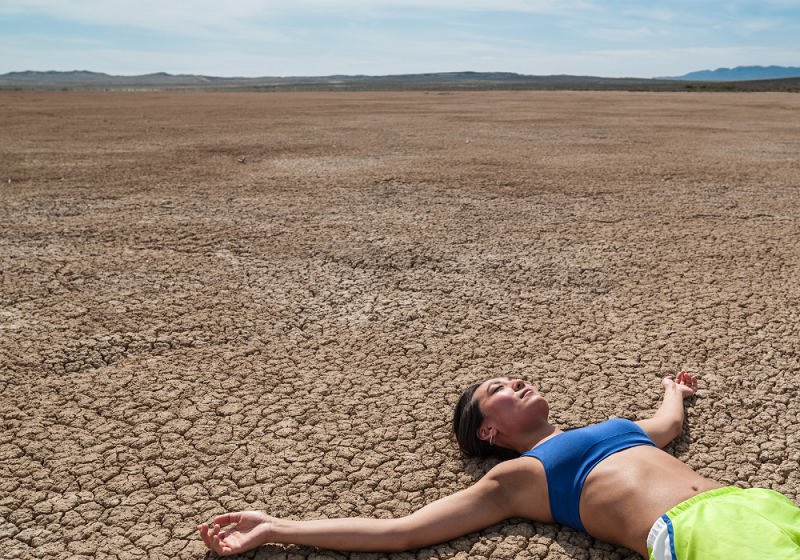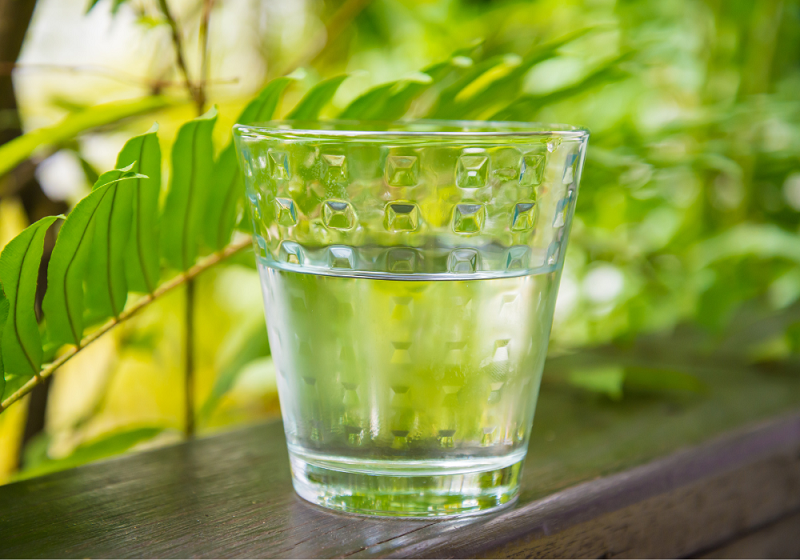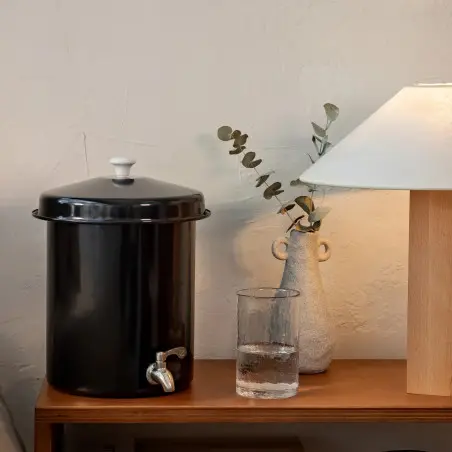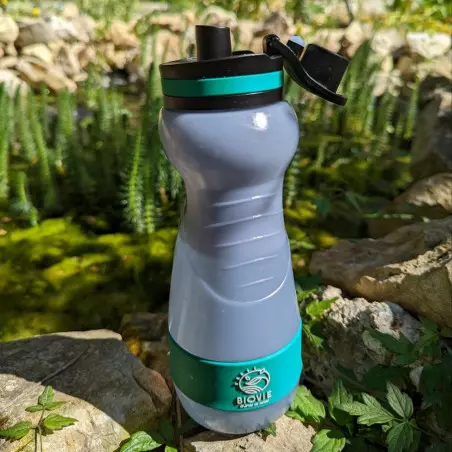Our cells are composed of more than 99% water. Therefore, it can be beneficial to pay special attention to it in our lifestyle, especially in the summer when our need for hydration increases.
The factors triggering dehydration:
Several factors can cause dehydration:
- The metabolic activity of the body, which corresponds to the breakdown or synthesis of molecules and results in a loss of water, particularly through respiration, sweat, and urine.
- The rising outside temperature increases perspiration.
- Physical activity also increases sweating.
- With age, the amount of water present in our body decreases as we get older.
- Overcooked, salty, and sugary food.

The importance of nutrition:
Hydration does not come exclusively from water but also from aqueous plants that contain water in the molecular form H3O2, which our body assimilates better than the H2O form present in plain water.
Depending on our diet, our water consumption needs change significantly. Indeed, a person living in a temperate country, doing little exercise, and having a diet largely composed of raw vegetables will have much lower water needs than a person living in the tropics, engaging in intense physical activity, and having a cooked and low-vegetable diet.
The fruits:
Summer is the ideal time to consume fruits in abundance. The juiciest fruits will be the most hydrating: melons, watermelons, berries, citrus fruits, nectarines... These fruits are also the ones that will deeply cleanse the body during this particularly favorable period when the outside temperature keeps the body in a certain physiological comfort.
Less watery fruits (bananas, persimmons, dates, avocados) are more useful for nourishing and building the body's tissues and should therefore be prioritized during periods when the body is more stressed (by external temperature, physical activity).
They are consumed alone to be properly digested and not ferment in the intestine.
Vegetable juices:
In addition to providing extra water intake, they are also a shot of micronutrients that are often insufficient in our diet. They can be consumed in addition to our regular diet because, being free of fiber, they are digested very quickly and do not burden the digestive tract.
Fruit-infused waters:
The water in which slices of citrus fruits or red fruits have been left changes its tension and allows the molecule to be more hydrating.
Fruit kefir:
In addition to its richness in probiotics and antioxidants, the fruit kefir allows for the replacement of carbonated drinks often found during summer aperitifs, having a lesser impact on blood sugar levels since about 70% of the sugar is consumed by bacteria and yeast. Unlike kombucha, it contains neither theine nor caffeine and is very easy to make.
Coconut water:
Being an isotonic drink (composition close to blood plasma), it helps to prevent dehydration, mineral loss, and hypoglycemia.coconut water is also rich in mineral salts (sodium, calcium, potassium, magnesium) which allow for good hydration of the body.
Attention: tea, coffee, and certain infusions are diuretics. The more we consume them, the more our water intake needs to be increased.
Which water to drink ?
Several drinking water options are available to us, each with its own advantages and disadvantages. In any case, it is in our best interest to consume living water, with low mineral content (dry residue < 120 mg/L), a slightly acidic pH, and that has undergone minimal treatment. Drinking water is more beneficial for what it removes than for what it provides. It has a cleansing function rather than a regenerating one. Here is a non-exhaustive list of consumable waters, but our recommendation remains to filter the water at home:
- Spring water naturally meets all the criteria, but few of us still have access to it.
- Bottled mineral or spring waters. They have the advantage of being low in minerals (low levels of dry residues) but the disadvantages of being contaminated by fine particles from the plastic in which they are contained and not containing bio-assimilable minerals. However, Montroucous, Montcalm, and Rosée de la Reine can be interesting alternatives due to their low levels of dry residues.
- Tap water, although safe for consumption, generally contains too many minerals and pollutants. However, there are various solutions to improve its quality.

Filtration:
- Simple activated carbon filtration system, such as a filter pitcher from major retailers: an inexpensive solution but with limitations regarding the removal of chlorine, certain heavy metals, and water-insoluble pesticides. It is also important to regularly change the filter to prevent leaching and bacterial proliferation.
- filtered water bottle for our travels
- Reverse osmosis filtration system: this technique requires an initial investment but it is the most effective for purifying water without chemicals.
- Filtration system with natural materials Ecofiltro house with the addition of hydrogen water production system in partnership with Myzora, which enhances the hydrating power of water
Distillation:
This technique allows for the elimination of pollutants and minerals, thus obtaining water that is very cleansing for the body. To prevent it from becoming too aggressive for the body, it should be slightly remineralized with some marine plasma, "a few drops of lemon juice or apple cider vinegar"
Dynamization:
Dynamization changes the physical and chemical properties of water by altering its molecular structure. Simple and accessible techniques can be used for this, such as geometric shapes or vortices that have specific benefits or help increase the vibrational potential of the water, thereby enhancing our own potential when we consume it. Since these techniques are not intended to purify the water, they should be used on water that is already safe for consumption. The innovative system hydrogenation of water is a system of revitalization benefiting from strong scientific support.
How much water to drink ?
As explained earlier, water needs vary depending on different factors, including diet. A person who primarily consumes raw vegetables will already have a significant water intake from their diet and can easily manage with half a liter of drinking water per day. Consuming more water than our actual needs can be detrimental to our body in the long term. Indeed, if we consume more water than our body requires, our kidneys and skin will have to make an extra effort to eliminate this excess water, which will eventually tire these excretory organs.
To determine the amount of water we need, we just need to observe our urine: if it is clear, it means we have drunk too much; if it is yellow, it means our water needs are met; if it is very colored and odorous, it means our water consumption is insufficient.
Referring to our thirst is not ideal because when we feel thirsty, our body is already lacking water.
Aurélie Scarabin is a Naturopath and Private Chef, passionate about humans and living beings. Her ebook "Winter in raw" is available in the store.










